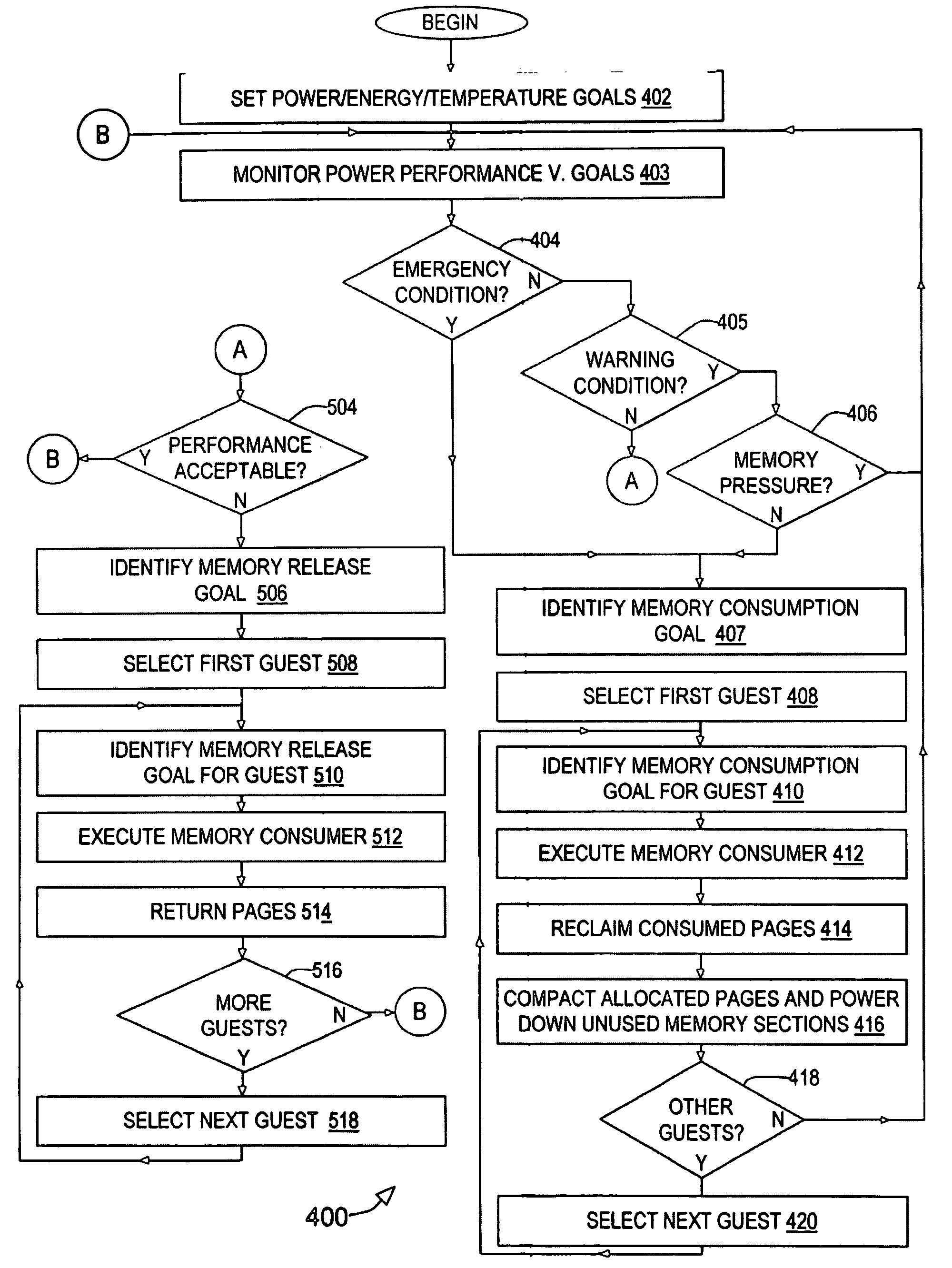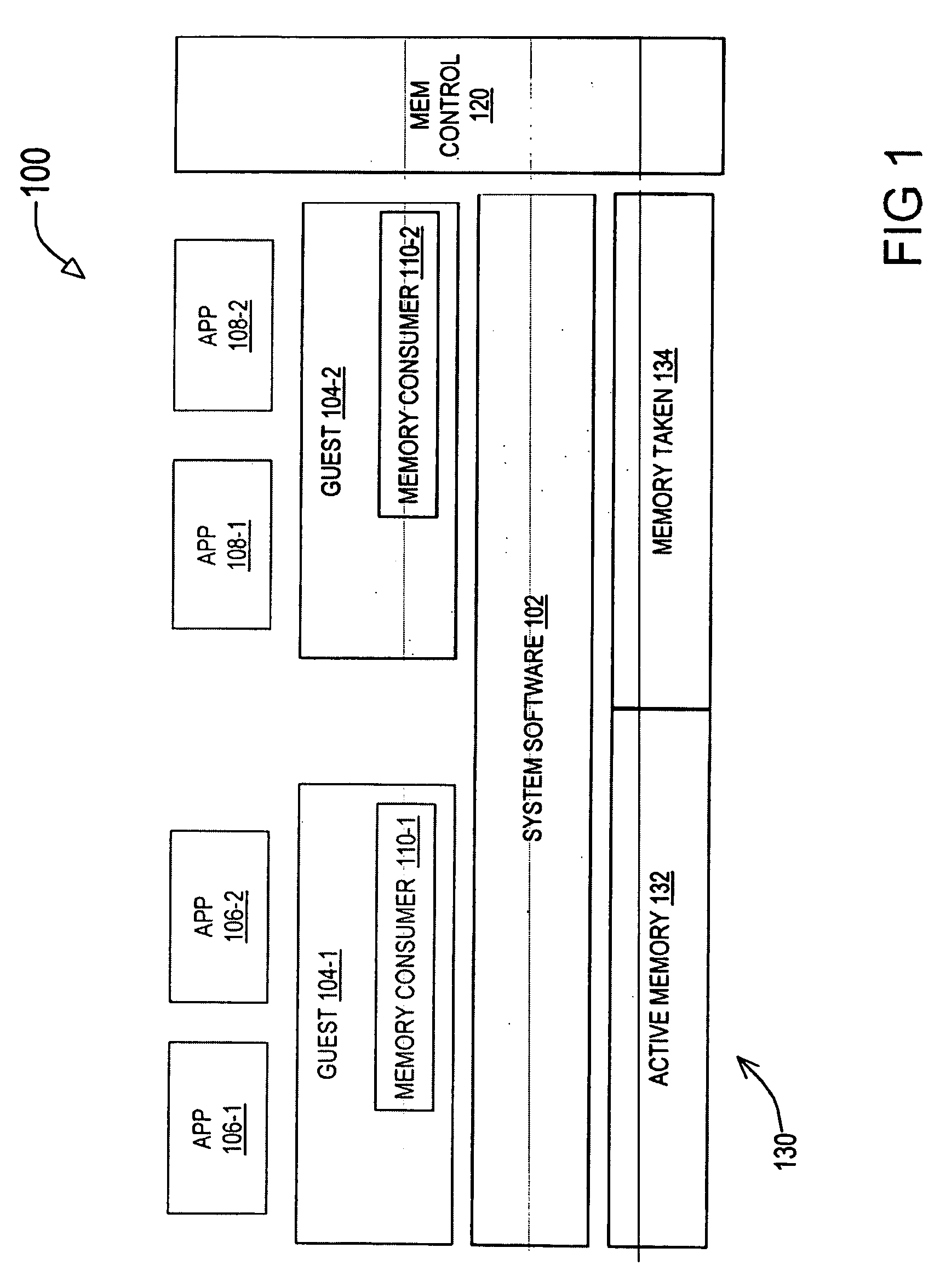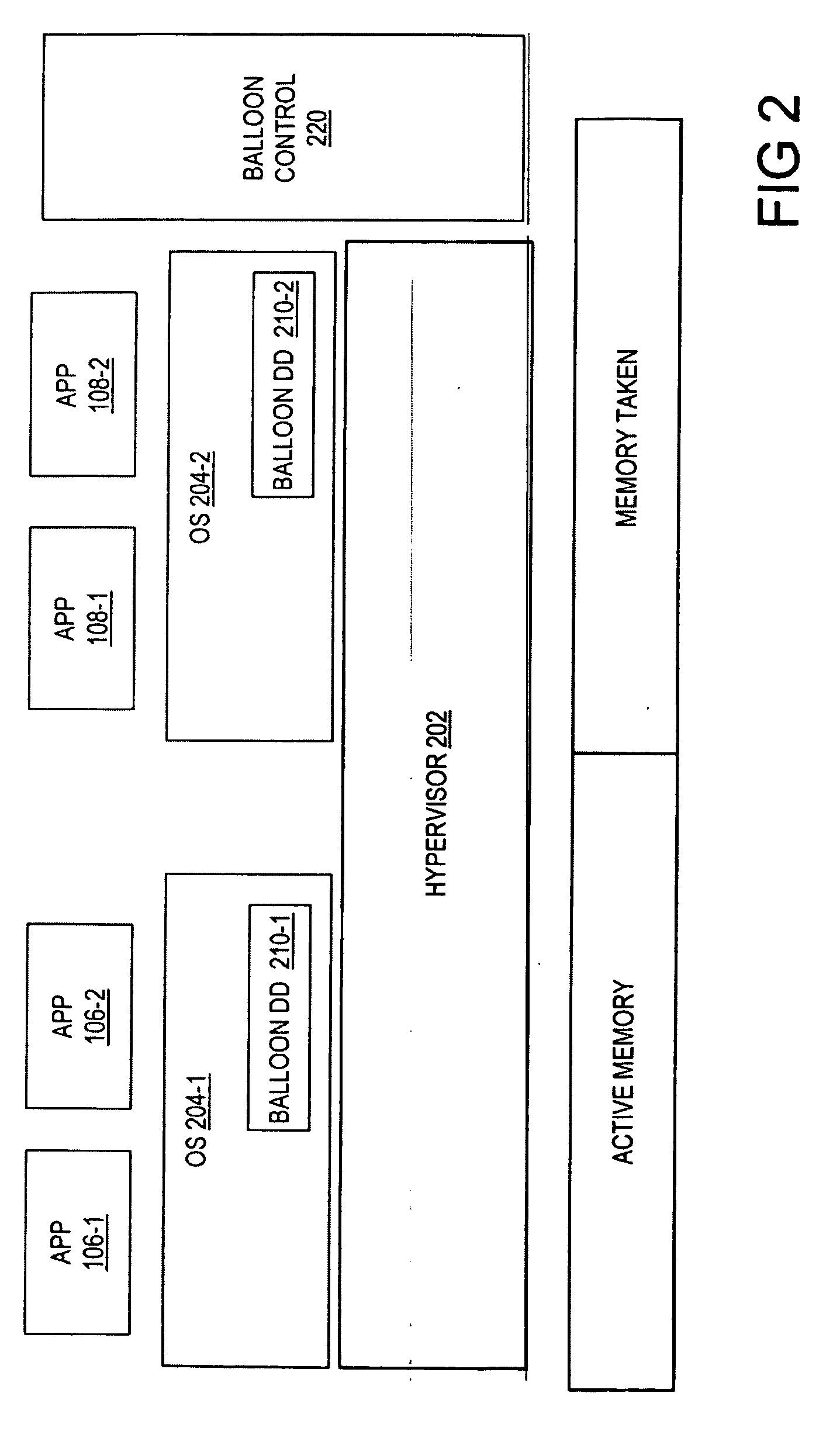System and method for reclaiming allocated memory to reduce power in a data processing system
a data processing system and allocated memory technology, applied in the field of data processing systems, can solve the problems of code then consuming system memory regardless of the value of other system performance parameters, and performance is low, and achieve the effect of reducing system memory power consumption and reducing allocated memory
- Summary
- Abstract
- Description
- Claims
- Application Information
AI Technical Summary
Benefits of technology
Problems solved by technology
Method used
Image
Examples
Embodiment Construction
[0015] The present invention is generally comprised of a system and method for managing system memory allocation in a way that is designed to emphasize power consumption as a primary memory allocation consideration. Likely implemented in a virtualized server system, the invention will, from time to time, monitor certain environmental parameters of the system such as the system temperature and power dissipation. If the monitored parameters indicate a need for reducing power consumption, the invention invokes a procedure that is specifically designed to acquire or consume system memory. In the process of responding to the memory consumer procedure, the guest is forced to de-allocate system memory from other applications. The memory consumer then reclaims this de-allocated system memory for the system. In this manner, the memory consumer has the net effect of reducing the amount of system memory that is allocated.
[0016] Following this memory consumption, memory compaction techniques m...
PUM
 Login to View More
Login to View More Abstract
Description
Claims
Application Information
 Login to View More
Login to View More - R&D
- Intellectual Property
- Life Sciences
- Materials
- Tech Scout
- Unparalleled Data Quality
- Higher Quality Content
- 60% Fewer Hallucinations
Browse by: Latest US Patents, China's latest patents, Technical Efficacy Thesaurus, Application Domain, Technology Topic, Popular Technical Reports.
© 2025 PatSnap. All rights reserved.Legal|Privacy policy|Modern Slavery Act Transparency Statement|Sitemap|About US| Contact US: help@patsnap.com



